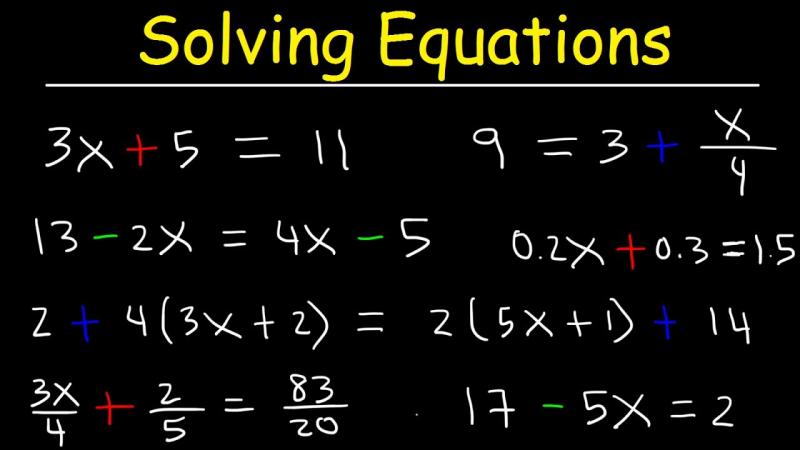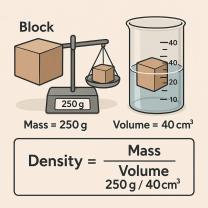How do you solve the equations in the class?
Solving equations is a fundamental skill in mathematics. Whether you're a student or a teacher, understanding how to solve equations effectively is essential for success in math classes. Here are some tips and strategies for solving equations in the classroom:
Understand the Basics:
- Ensure you have a solid understanding of the basic principles of algebra, including the properties of equality, operations, and the order of operations (PEMDAS - Parentheses, Exponents, Multiplication and Division, Addition and Subtraction).
Identify the Type of Equation:
- Recognize the type of equation you are dealing with. Equations can be linear, quadratic, exponential, logarithmic, etc. The method for solving them varies.
Isolate the Variable:
- The goal is to isolate the variable (usually represented as "x") on one side of the equation. To do this, use inverse operations. If you add, subtract, multiply, or divide one side of the equation, do the same to the other side to maintain equality.
Follow a Systematic Approach:
- Begin by simplifying both sides of the equation. This may involve combining like terms and getting rid of parentheses or fractions.
Use Inverse Operations:
- When solving linear equations, use inverse operations to isolate the variable. For example, if you have , start by subtracting 5 from both sides: , then divide by 2: .
Solve for X:
- After isolating the variable, ensure you have . Check your solution by substituting it back into the original equation to make sure both sides are equal.
Pay Attention to Special Cases:
- Be aware of special cases such as equations with no solution or infinitely many solutions. For example, if you get , that's a clear indication that there's no solution.
Practice, Practice, Practice:
- Solving equations is a skill that improves with practice. Work on a variety of problems to become proficient.
Visualize Equations:
- Use visual aids or diagrams, especially for geometric and word problems. Drawing a diagram can help you translate the problem into an equation.
Show Your Work:
- In the classroom, it's important to show your work step by step, especially when solving more complex equations. This allows your teacher to understand your thought process and provide feedback.
Ask for Help:
- If you're struggling with a particular type of equation or problem, don't hesitate to ask your teacher for clarification or seek additional help from a tutor or classmate.
Use Technology:
- Utilize calculators, computer algebra systems, or online equation solvers to check your work and gain a deeper understanding of the process.
Read the Problem Carefully:
- Pay close attention to word problems and make sure you understand what is being asked before you attempt to set up and solve the equation.
Review and Reflect:
- After solving equations, review your work to see if there are any patterns or strategies you can apply to similar problems in the future.
Remember that solving equations is a skill that builds over time, so don't be discouraged if you encounter challenges along the way. With practice and a good understanding of the fundamental principles, you can become proficient in solving equations in your math class.
Problem Solving in the Classroom: Strategies and Techniques
Problem-solving is a fundamental skill that students need to develop to succeed in school, work, and life. Effective problem-solving involves identifying the problem, analyzing the situation, generating possible solutions, evaluating the solutions, and implementing the chosen solution.
Strategies for Teaching Problem-Solving:
Provide Opportunities for Practice: Incorporate regular problem-solving activities into the curriculum to provide students with hands-on opportunities to apply problem-solving skills.
Encourage Collaboration: Encourage students to work together on problem-solving tasks, fostering teamwork, communication, and peer learning.
Model the Problem-Solving Process: Demonstrate the problem-solving process step by step, breaking it down into manageable steps to guide students.
Emphasize Thinking Strategies: Teach students various thinking strategies, such as brainstorming, visualizing, and using diagrams, to enhance their problem-solving approach.
Encourage Diverse Solutions: Promote the idea that there can be multiple solutions to a problem, encouraging creativity and different perspectives.
Provide Feedback and Support: Offer constructive feedback and guidance throughout the problem-solving process to help students learn from their mistakes and improve their skills.
Equations in the Classroom: Enhancing Student Learning
Equations are a fundamental aspect of mathematics and are essential for solving problems involving real-world situations.
Strategies for Teaching Equations:
Provide Context: Connect equations to real-world scenarios to make them more meaningful and engaging for students.
Visualize Equations: Utilize visual aids, such as diagrams, graphs, and manipulatives, to represent equations and enhance understanding.
Break Down Complex Equations: Break down complex equations into smaller, more manageable steps to make them less intimidating for students.
Encourage Different Solution Methods: Teach students multiple methods for solving equations, such as algebraic manipulation, graphing, and using technology.
Practice with Diverse Equation Types: Provide practice with a variety of equation types, including linear, quadratic, and exponential equations, to broaden students' problem-solving skills.
Celebrate Successes: Recognize and celebrate students' achievements in solving equations, boosting their confidence and motivation.
Promoting Effective Problem-Solving Skills in Educational Settings
Effective problem-solving skills are crucial for success in various academic subjects and throughout life.
Strategies for Promoting Effective Problem-Solving Skills:
Create a Supportive Learning Environment: Foster a classroom environment that encourages risk-taking, experimentation, and learning from mistakes.
Develop Students' Confidence in Problem-Solving: Help students build confidence in their ability to solve problems by acknowledging their efforts and celebrating their successes.
Encourage Persistence and Perseverance: Emphasize the importance of persistence and perseverance in solving problems, teaching students that setbacks are learning opportunities.
Teach Metacognitive Skills: Teach students metacognitive skills, such as self-monitoring, self-evaluation, and planning, to improve their problem-solving strategies.
Integrate Problem-Solving Across Subjects: Incorporate problem-solving activities into various subjects, demonstrating its applicability in different domains.
Connect Problem-Solving to Real-World Applications: Highlight the importance of problem-solving in real-world situations to show its relevance and practical value.













